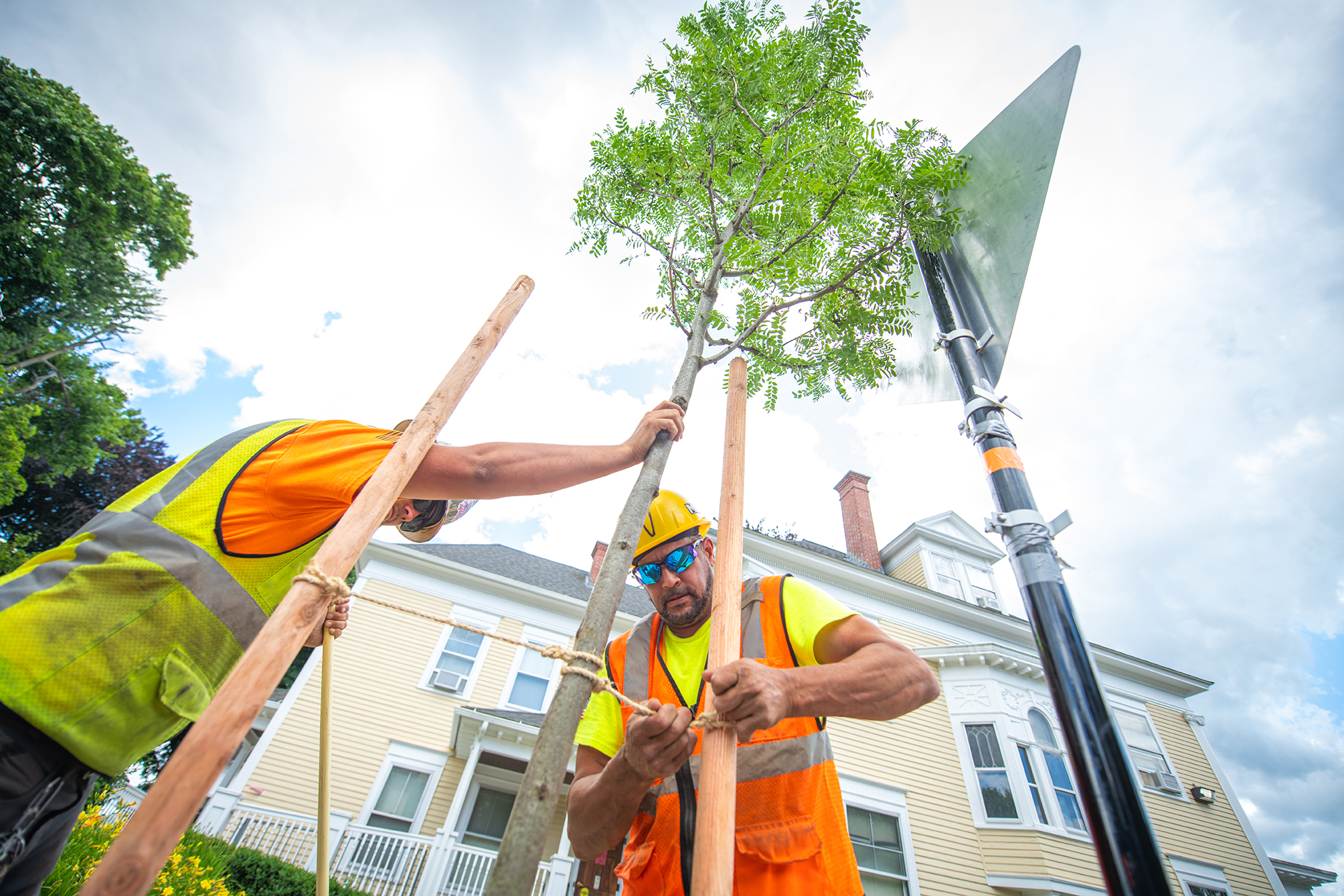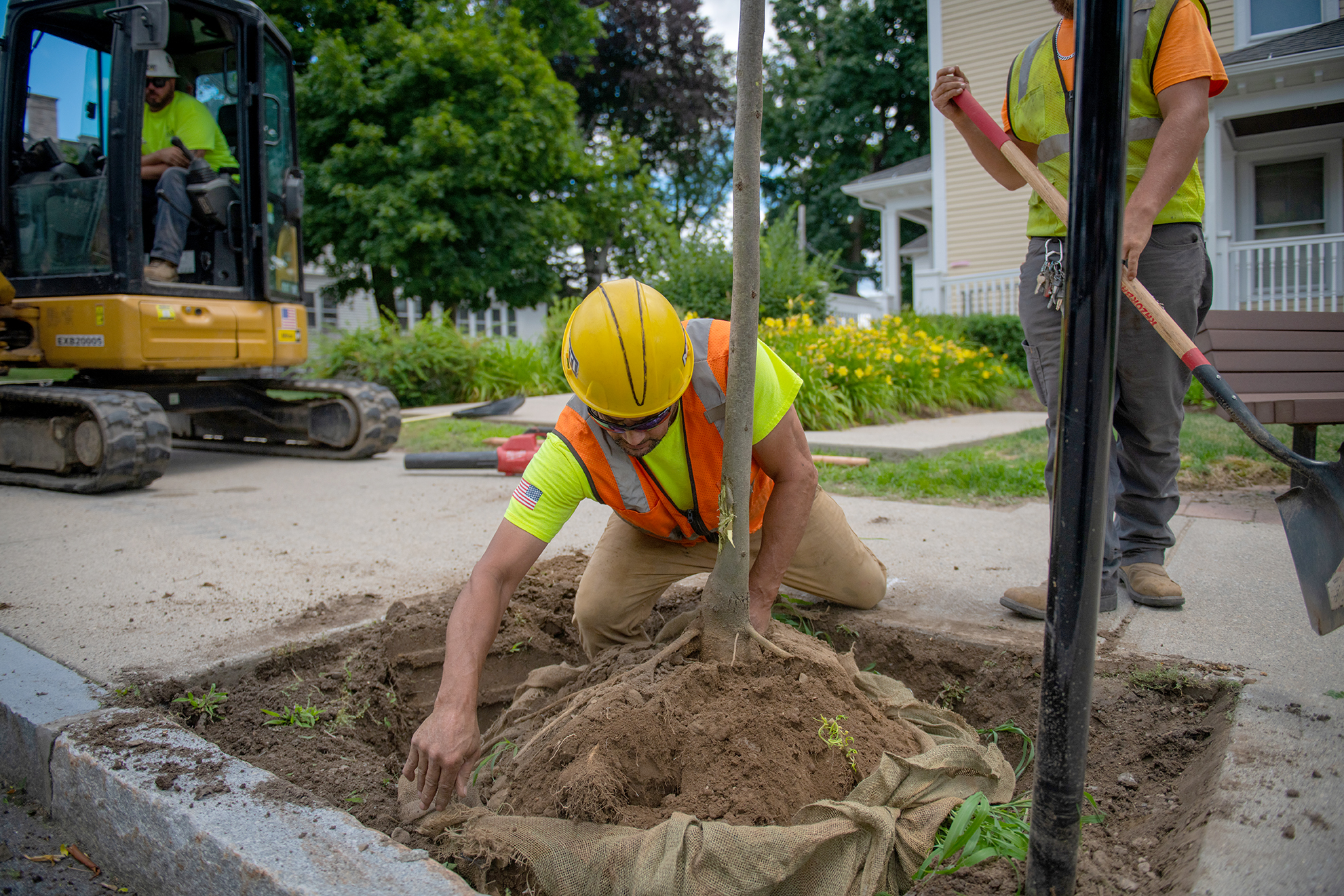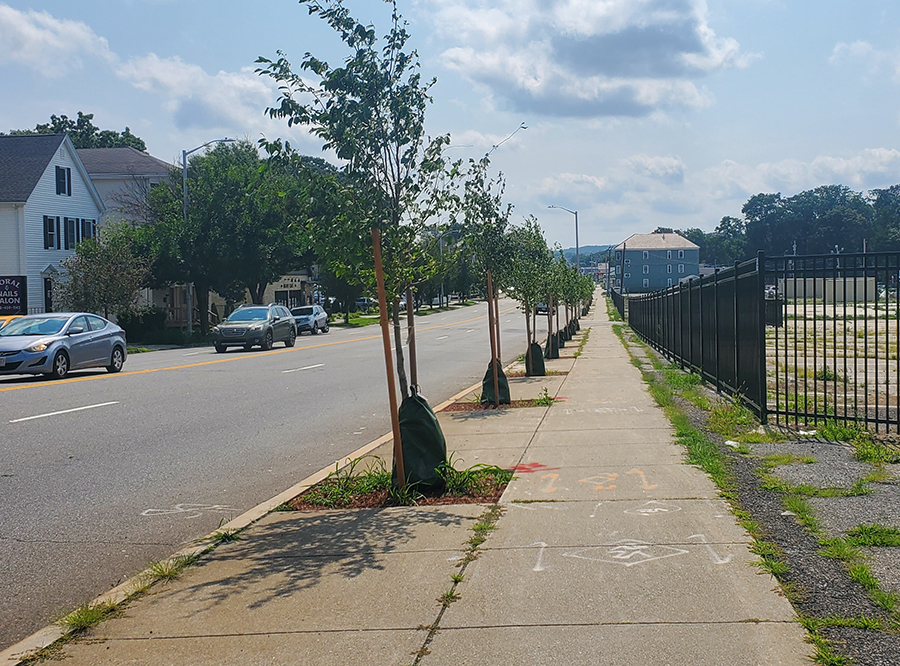A tree grows in Worcester (75 of them, in fact)

Every summer, under the direction of John Rogan and Deborah Martin, professors in Clark University’s Graduate School of Geography, student researchers in the Human-Environment Regional Observatory (HERO) Program seek to improve environmental conditions in “gateway” cities throughout the state, where residents swelter on streets and sidewalks that lack adequate tree cover.
This year, Rogan and his students had the opportunity to focus on terrain a bit closer to home. Through a unique partnership with Worcester, 75 new trees have been planted in the Main South neighborhood to add natural beauty to the area and contribute to a healthier, and cooler, environment for residents.
 Last November, Joseph Corazzini, vice president for government and community affairs, proposed an initiative where Clark could work with the city’s Forestry Division to add some much-needed shade to the Main South neighborhood. Clark would invest $50,000 to purchase the trees, and Rogan and his students would assist with surveying the area, creating a map to identify tree-planting locations, and work with others in Main South to sustain the newly planted trees.
Last November, Joseph Corazzini, vice president for government and community affairs, proposed an initiative where Clark could work with the city’s Forestry Division to add some much-needed shade to the Main South neighborhood. Clark would invest $50,000 to purchase the trees, and Rogan and his students would assist with surveying the area, creating a map to identify tree-planting locations, and work with others in Main South to sustain the newly planted trees.
Corazzini and Rogan worked with Robert Antonelli Jr., assistant commissioner in the Department of Public Works and Parks, and John Odell, chief sustainability officer, to hammer out the details.
“What emerged from the meeting fit well with the overall ‘Green Worcester Plan’ to increase tree canopy cover along Worcester’s streets,” Rogan says.
In January, Rogan worked with Tanner Honnef ’24, Espi Garschina-Bobrow ’25, and Clio Bate, M.S. ’24, to inspect the streets around campus and identify where 75 new trees would prove most beneficial to residents, for shade and aesthetics.
The team drew on a study the HERO fellows performed for the City of Worcester years ago using ground surveys of air temperature and surface temperature, and discovered that Hawthorne and Woodland streets and Park Avenue were among the hottest streets in the summertime because they lacked tree cover. The team recommended the city add Linden, Sweetgum, Pin Oak, and Honey Locust — all considered to be some of the best “street trees” — to those areas because of their high rate of survivorship. They also identified planting sites with low existing tree cover and ample space for roots, and even proposed new planting locations in concrete sidewalks where no tree pits existed.

Rogan cites the long stretch of concrete sidewalk on Park Avenue by Maywood Street as in particular need of significant plantings. The trees overlook the former car lot once owned by the Diamond Chevrolet group, which had been reluctant to see trees planted there because leaves would cover the cars, Rogan says. Clark purchased the long-vacant 7.3-acre property in 2021.
“The trees are already providing benefits to residents because they are shading the sidewalks and provide a more pleasant walking environment,” he says. “As the trees mature, they will shade the streets and lower the air temperature, reduce noise from cars, and provide habitat for native insects and birds.”
Rogan notes that since the tree-planting is dependent on neighborhood buy-in to succeed, it is an ideal project for him and his students, who have a long history of fostering and sustaining community participation in environmental initiatives.
The partnership has clear benefits for Worcester, but will require neighborhood participation to succeed over the long term, Antonelli says.
“Neighborhood support is a key factor on the survivability of a newly planted tree, since a tree that is cared for and watched over every day has a better chance to become a healthy tree in the future,” he says. “We are excited for this initial program, and we appreciate the school’s financial commitment to the Main South neighborhood. We look forward to continued partnership in the coming years.”
By mid-July, Garschina-Bobrow, Kalon Shepard ’25, and Cole Murphy, an undergraduate intern from Quinsigamond Community College, had already begun surveying the health status of the new trees using protocols established by the HERO program.
“This information allows us to keep track of the tree status so we can intervene if there are any problems,” Rogan says.


